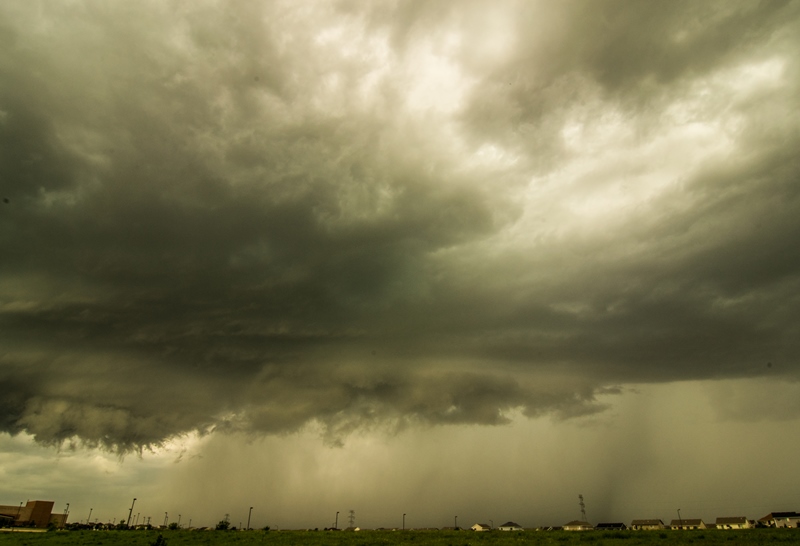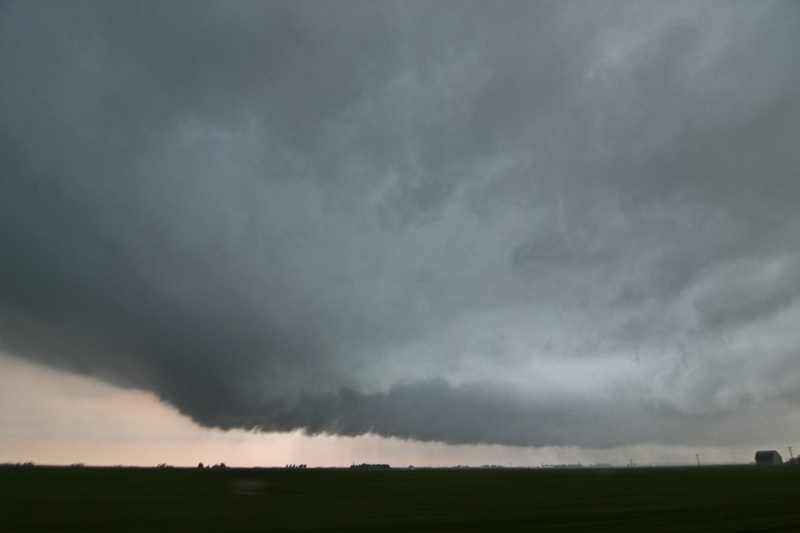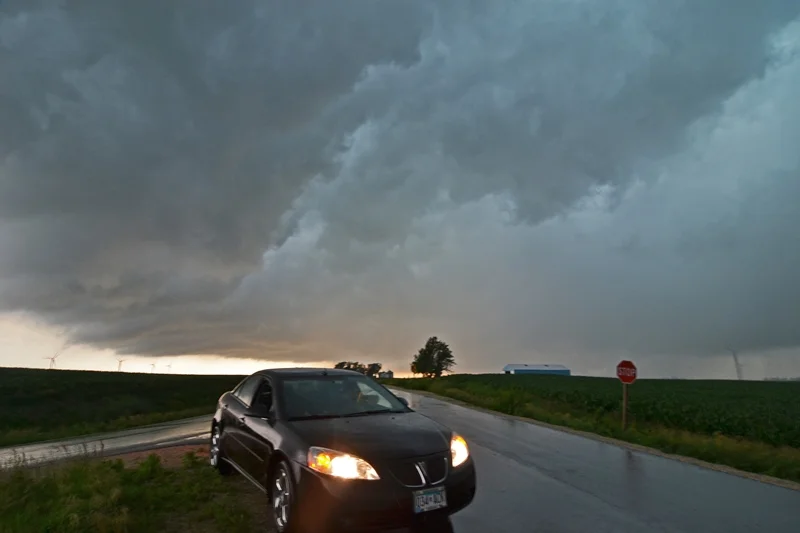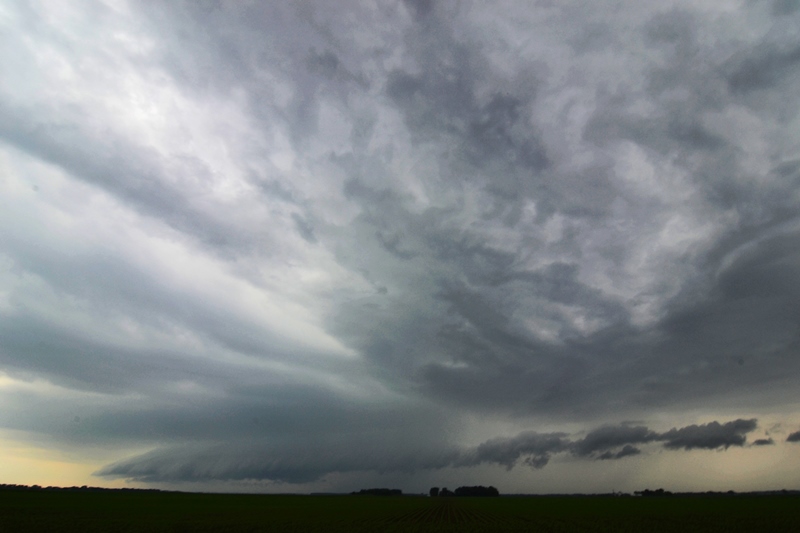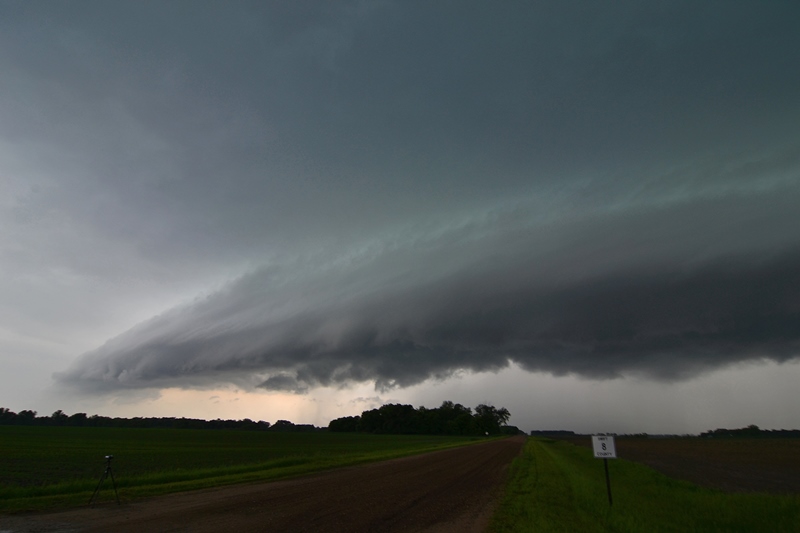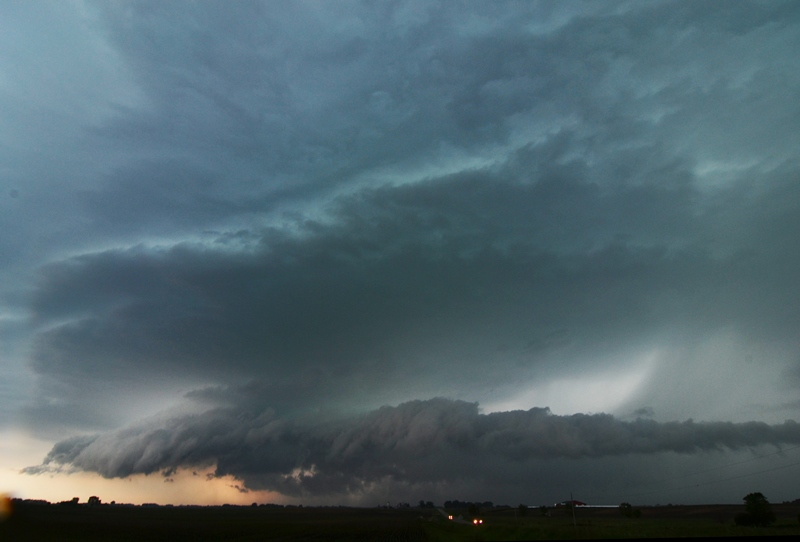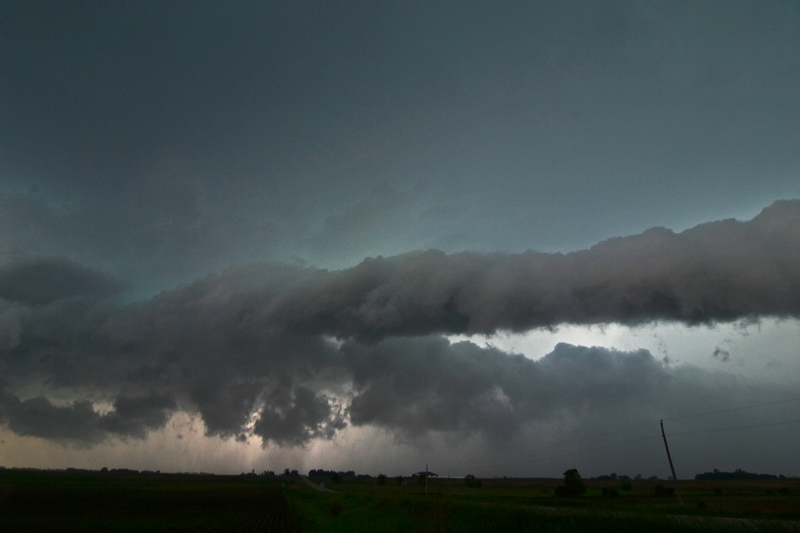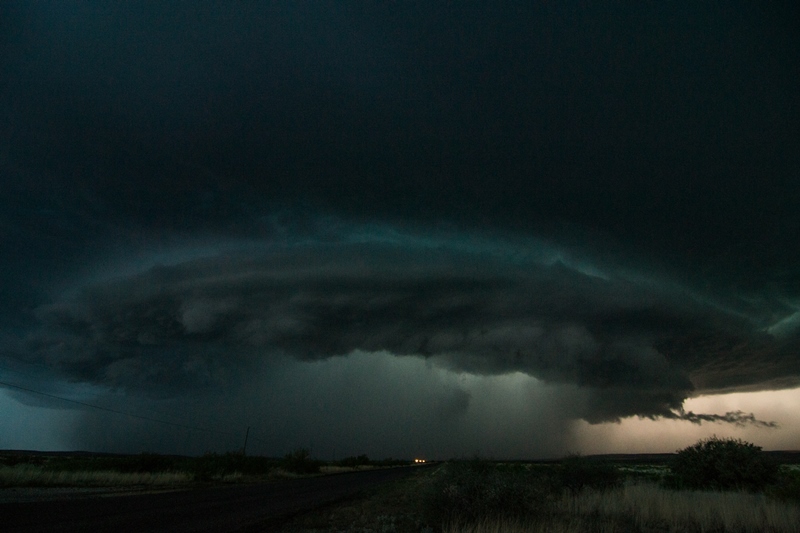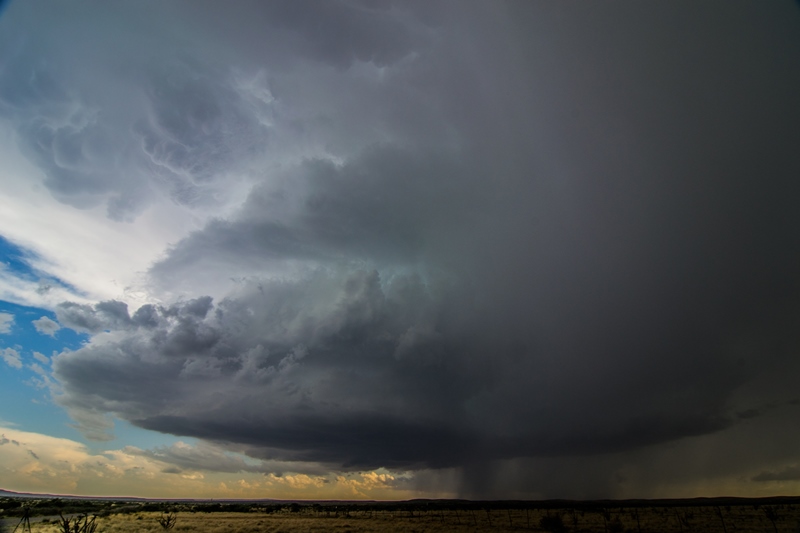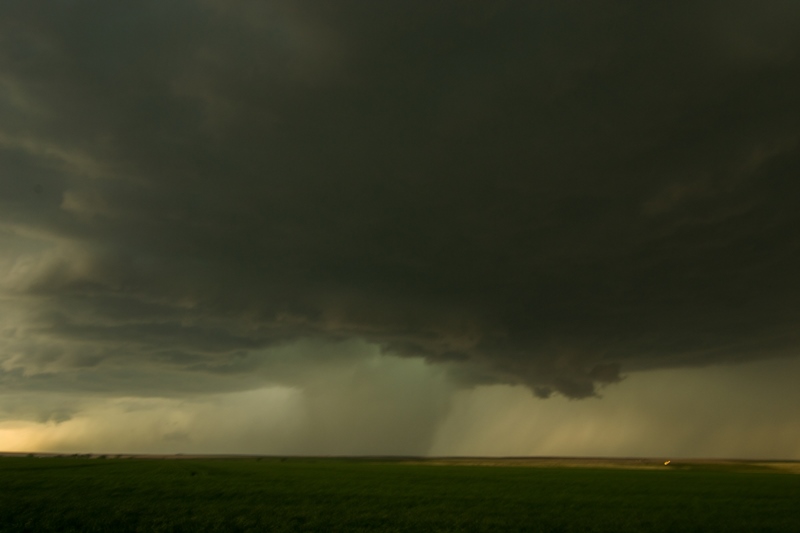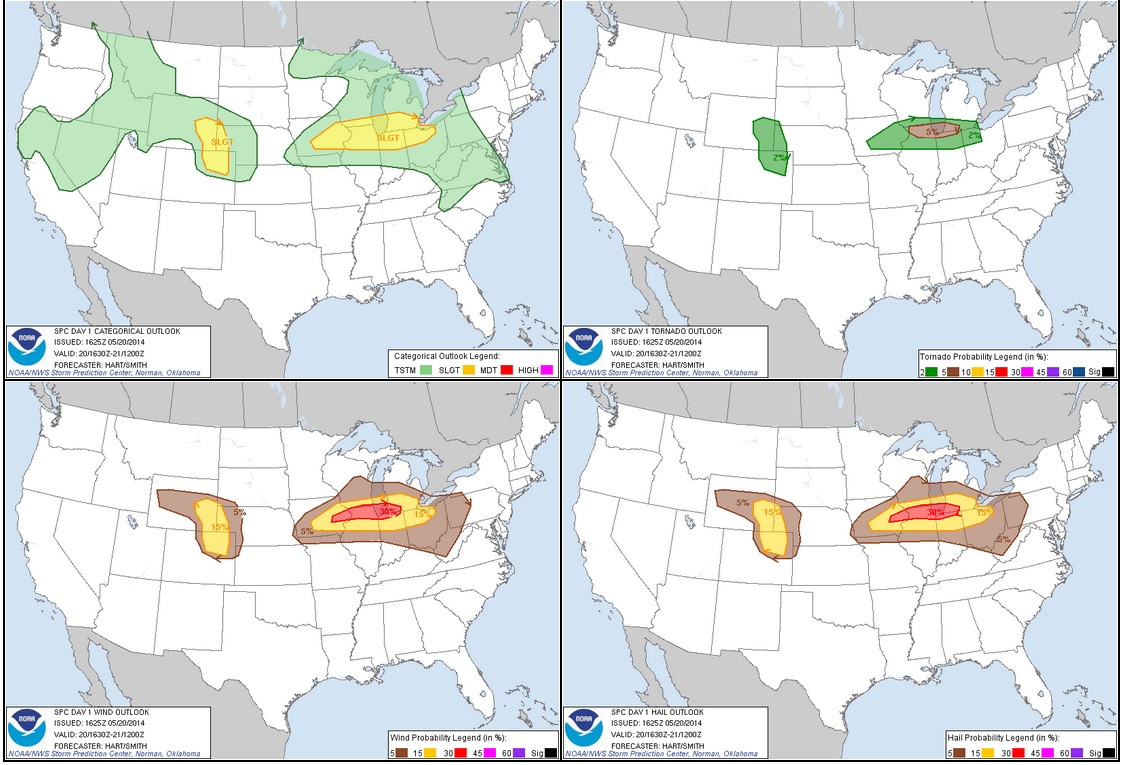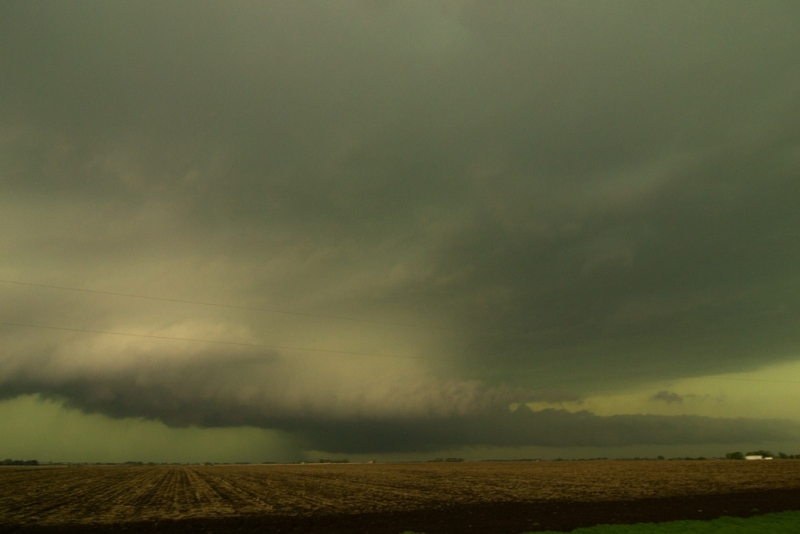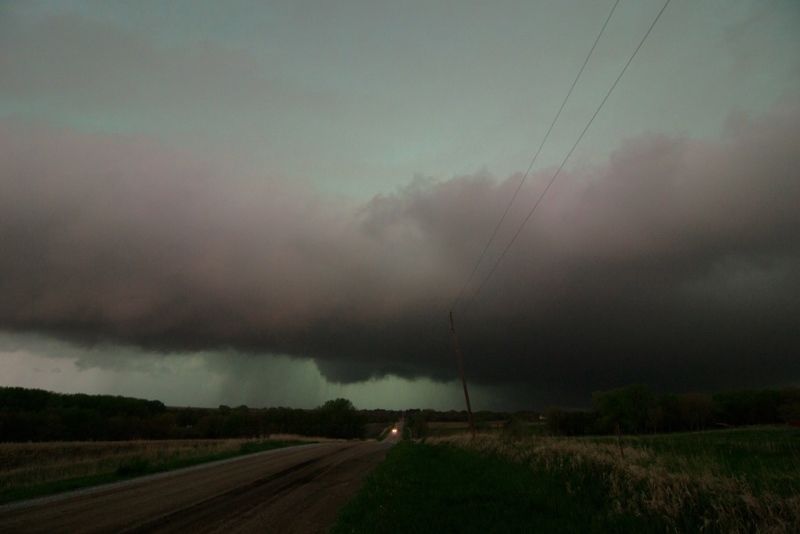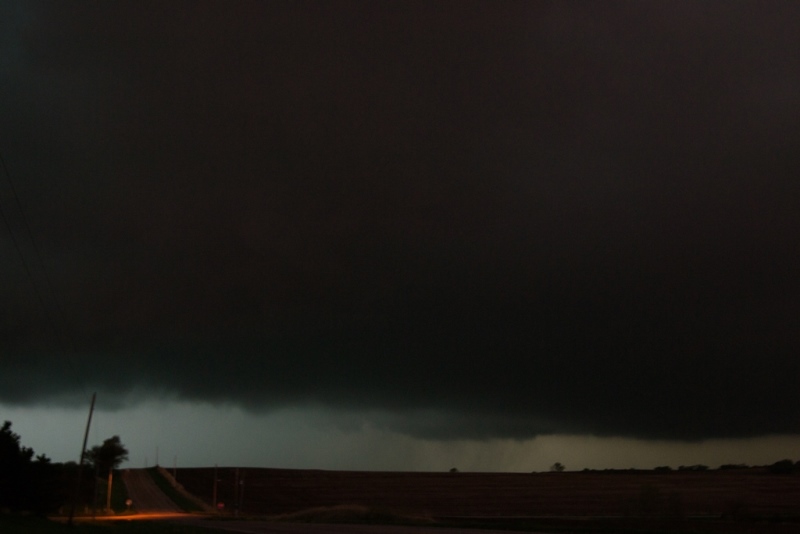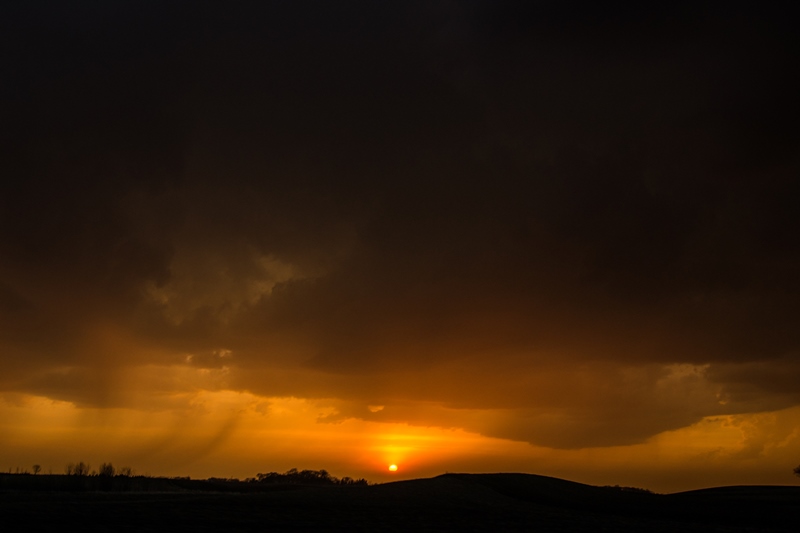MAY 26 2014 CHASE LOG: TEXAS
Written by Rich Hamel: (www.bostonstormchaser.com/)
Finally a real adrenaline pumping chase day! The plan was to find the dryline intersection with the outflow boundary from the previous day’s storms and wait. We drove from Hobbs, NM to Big Spring, TX and had lunch. By the time we’d finished up lunch, a line of storms was firing to our northwest near Seminole, so we headed out of town to intercept the best looking cell with the plan being to chase that cell, then as storms fired down the line drop to the tail end storm, repeat, and repeat again. We didn’t have long before we intercepted the first storm as it went severe and was soon tornado warned near Patricia around 3 PM. We stopped and observed a big wall cloud low to the ground and within a minute or two there was a persistent dirt swirl on the ground with cascading motion above, tornado number one for the day! That tornado lasted only a minute or two, and the storm was right turning hard so we had to get ready to leave. We observed the rear flank downdraft winds plowing dirt into the sky and had to beat feet to get out of the way, running south down Rt. 137 towards Lenorah. We got plastered by flying dirt and strong cross winds as we blasted south, and a large spin up (probably a gustnado but can’t rule out a shearline tornado) formed just west of my van as we headed away.
The storm had quickly become a high-precipitation monster, making visibility into the notch area very difficult, and by now the chaser hordes had arrived, hundreds and hundreds of vehicles worth. This was by far the most difficult portion of the day, finding ways to safely navigate all of the traffic pulling in and out of every decent viewing position while trying to keep our four vehicles together.
By 4 PM, the storm was totally HP and any tornado that was in there was completely rain wrapped (in fact there were reports of a rain wrapped tornado crossing I-20 near Coahoma later), so we decided to drop to the next storm in line which was now becoming quite severe. We passed through Big Spring again and headed west on I-20 to intercept. At this point the storm had a tremendous radar return with a “scorpion tail” hook echo on radar indicating rapid rotation. As we charged towards the storm, we couldn’t see the updraft through the massive precipitation core that was racing towards the highway with baseball sized hail, so we got off the highway and headed south on Rt. 33 to get around the core and beat the storm to Garden City. We stopped for a minute to view the storm and had a neat vantage with our new storm our west, and our old storm chugging away to the northeast. We immediately saw another big dirt bob in the distance to our west but concluded that this was again RFD winds plowing around the south side of the storm. We continued south, now once again swamped in the convoy of chasers that had finally abandoned the northern storm.
We leapfrogged through the chaser-gaggle, heading east on rt. 158 at Garden City as the storm grew to peak intensity, with 3-4” hail and a massive hook echo still on radar. It was also getting HP quickly and ingesting an incredible amount of dirt from the dry fields in the area so it was getting difficult to see into the inflow notch. We finally got ourselves way out ahead of the storm and found a south pull off to set up and watch as the storm came right down the highway after us. The storm now had a big wall cloud and was rotating like crazy.
We stayed at that location for about 15 minutes as the storm closed in quickly, with RFD dirt plumes, gustnadoes, and all kinds of flying dirt in the air. Soon it was time to get out of the way, so we headed back to the end of the road when Roger started yelling to stop and sure enough, to our west there was a weak tornado occurring, wrapped up in rain. We waited very briefly as it closed on us and seemed to dissipate, then everyone in my van starting yelling and I turned to see a tornado forming less than 100 yards from the van! We hit the gas and got out of there as the tornado blasted through the field south of us then quickly dissipated.
Our next issue was that we were now getting into the Mosquite region of Texas, with lots of trees and big ridges on either side of the road so it was difficult to see. There were a variety of reports of a rain wrapped tornado, so we stayed well ahead of the storm. At one point we stopped for a few minutes and may have gotten a look at a small cone tornado off the distance but can’t confirm. After a brief stop south on 163 south of Sterling City, we headed down Rt. 87 southeast towards Water Valley. On the way we were able to see a short duration rope tornado coming from the storm, though I didn’t see it as I had to keep my eyes on the road (the downside of driving on chase days sometimes).
Northwest of Water Valley we stopped at a rest area, turned the vans around, and waited for the beast of a supercell to come right to us. The structure was incredible! The storm had little tornado potential by now but was packing huge hail. We watched for about 30 minutes as the storm came to us and passed just to the north. Meanwhile, right behind that storm was another tornado warned storm, so once our previous storm moved out of the way we headed back up Rt. 87 to take a look, but at this point it was getting dark and the storm seemed to be getting seeded by the water cooled air blowing out of our previous storm, so we decided to call it a day and head into San Angelo for dinner. We did have a little moment of excitement there as just as we finished eating dinner it became obvious that if we didn’t get clear in about 10 minutes, the storm we’d left was about to pummel the town (and us) with tennis ball hail! We scrambled to get in the vans and blasted northeast of town, just getting clipped by the edge of the core as we got away. The rest of the right up to Abilene was uneventful.
Fantastic chase day with 2 great storms, 3 brief tornadoes (and maybe glimpses of 2 more) and not that much driving: only 460 miles for a 7 day total of 3523 miles.





